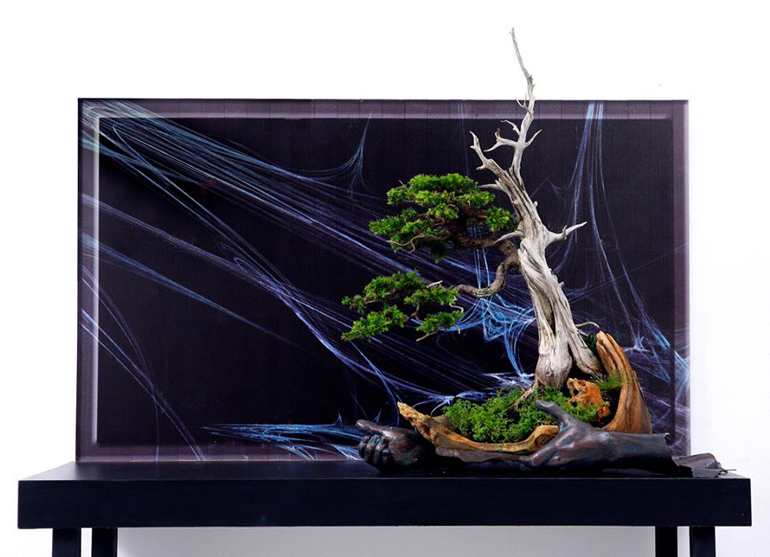
Halloween (the show was in October)? At first glance you might just see the tree and the cobwebs and miss the hands clutching (persenting?) the sculpted wooden pot. All the photos in the post are from Robert Steven’s 2014 International Bonsai Art & Culture Biennale.
Coming up with a title that captures the sheer creative energy of the bonsai displays shown here wasn’t easy (Messing with Bonsai Convention in a Very Big Way was my second choice). Nor is writing about them (way too many hyped up adjectives keep trying to force their way in). I even thought about just showing the photos and not writing anything, but then this is Bonsai Bark where brilliant bonsai photos and not-so-brilliant words have been co-existing for six years now.
Though I’m sure some people will disagreed with my excitement about these images, it’s hard for me to imagine not being blown away (or at least impressed) by what Robert Steven and friends pulled off in Indonesia last October.
Even if you are the ultimate bonsai arch-traditionalist and your emotional response to these images is somewhere between extreme discomfort and overwhelming bewilderment, you’d still have to admit to their raw power and innovation, especially considering their sheer volume (what’s presented here is the tip of iceberg) and the amount of work that must have gone into creating them.
All the photos are from Robert Steven’s first International Bonsai Art & Culture Biennale that took place October 2014 in Yogyakarta, Indonesia. Stay posted for more photos, or visit Robert on facebook.

Halloween again (though I suspect there’s much more going on here than that). There’s something about those ‘severed’ arms that’s just a little ominous. Is this where the recent ‘Black Scissors’ fad started?
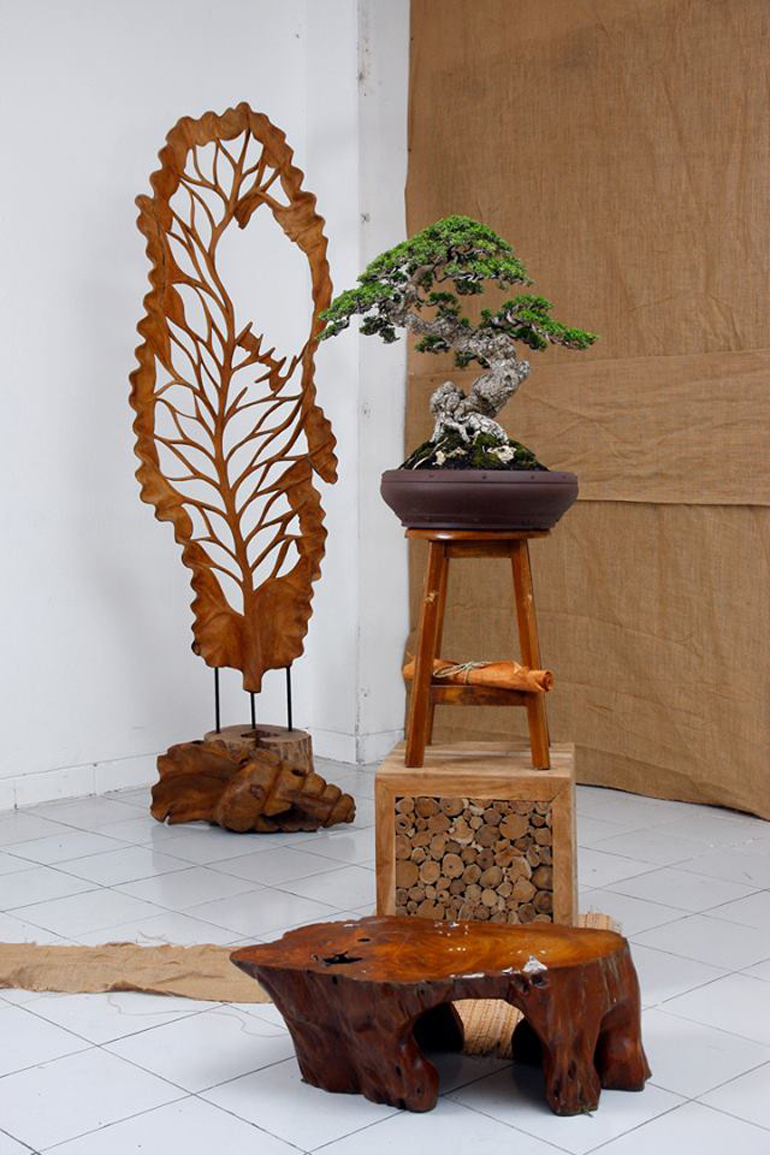
Nice sculpture and great tree make for a sweet display that provides a little relief from the intensity of the first two photos.

One corner of one of many rooms at the Biennale (there were also outdoor displays and live theater as well).
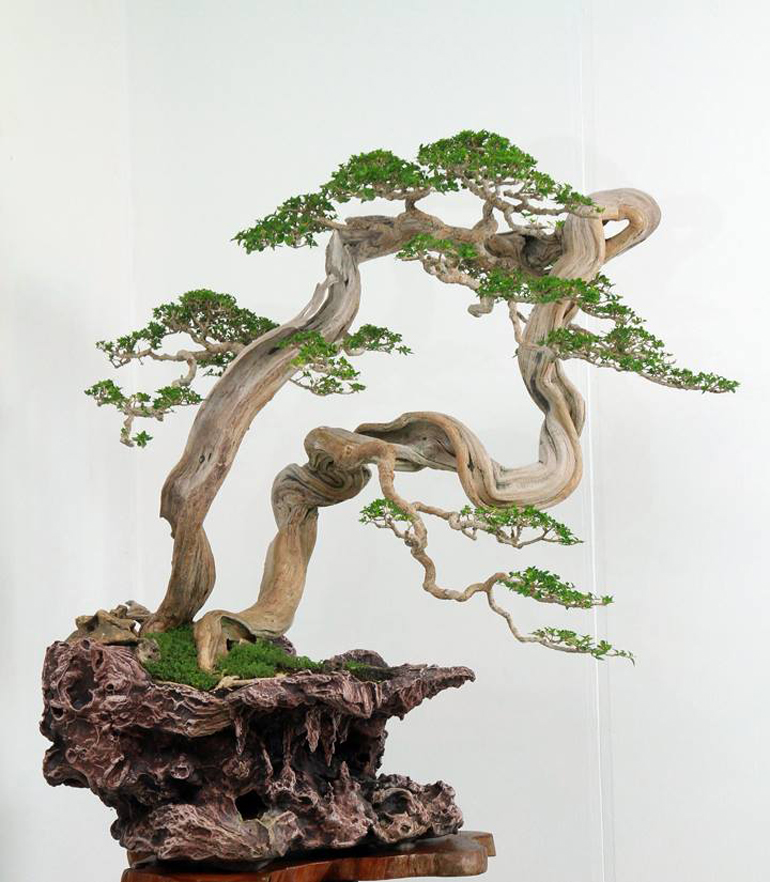
It’s the bonsai, not the display, that’s mind bending in this case. Though I guess the unusual tree and the way it’s perched on an equally unusual rock, does make for an dramatic display.
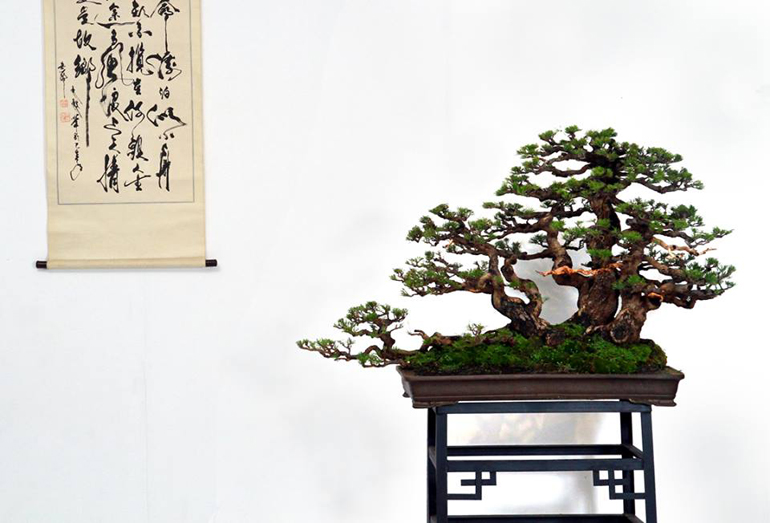
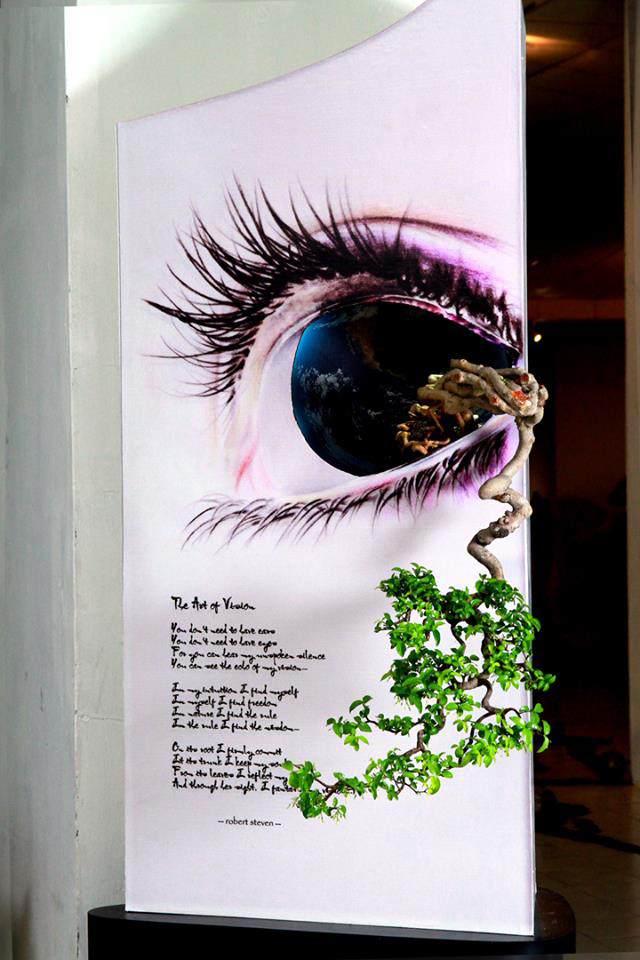
Bonsai is in the eye of the beholder.
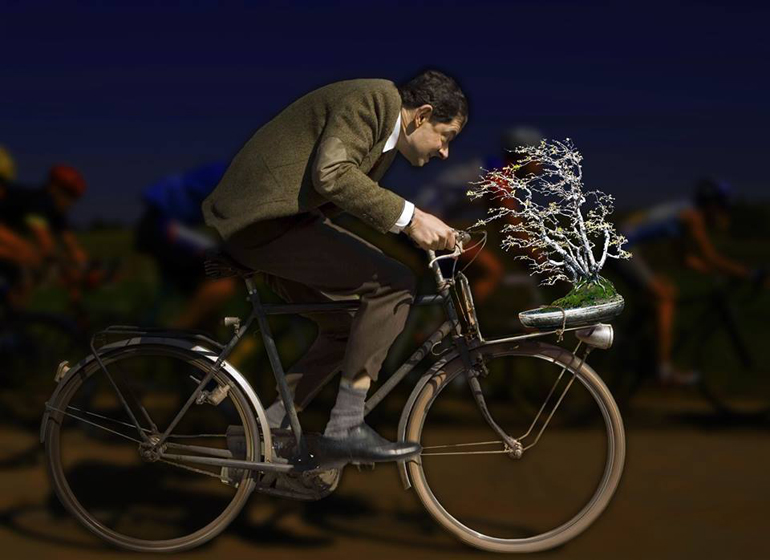
Sense of humor helps.
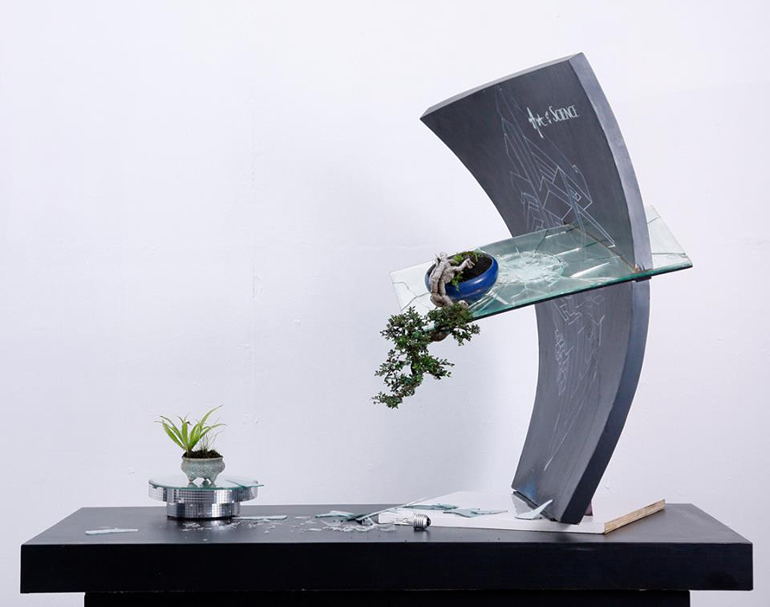
Impermanence.
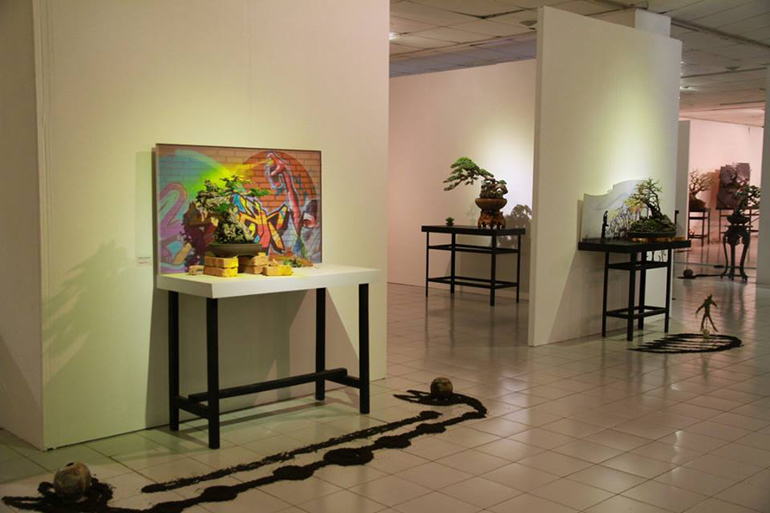
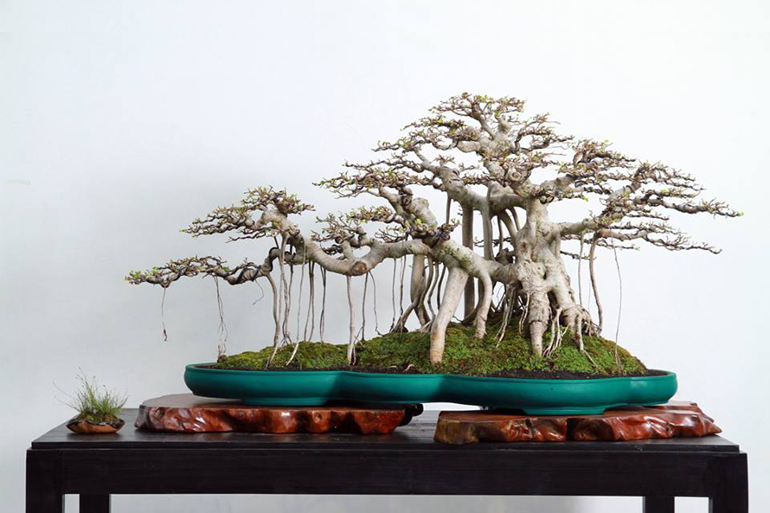
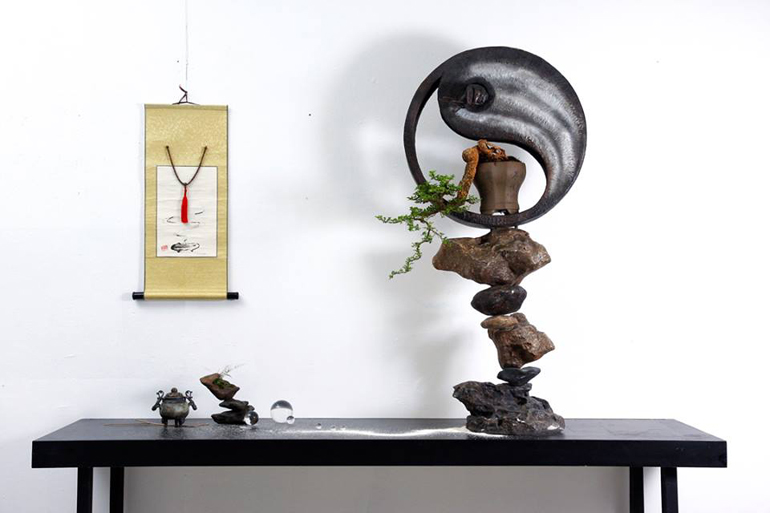
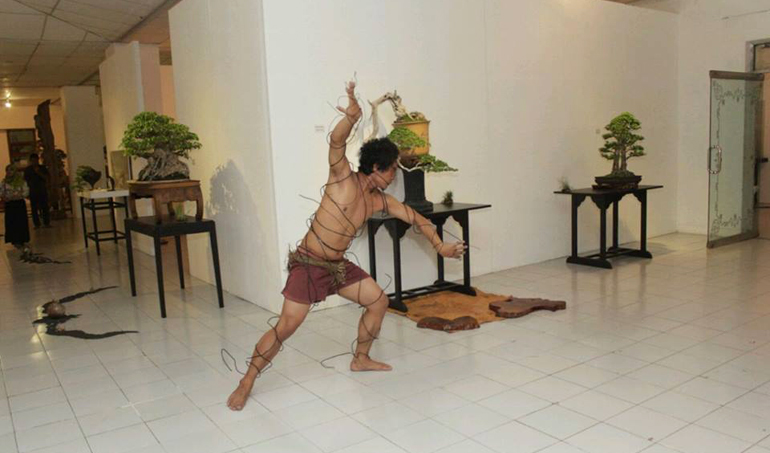
Your guess is as good as mine.

Robert’s famous book. Now on special at Stone Lantern.
International Bonsai Art & Culture Biennale 2014
When Art and Culture Meet Through Bonsai
Yogyakarta, 18th – 21st 2014
The Multimedia Bonsai Presentation concept has presented the beauty of 4th dimension of bonsai art. This was a creative break through to the glass ceiling effect in bonsai art that had successfully raised bonsai to a higher level, specifically in the exhibition presentation.
Multimedia is a common term in many art forms, but for the first time it was presented in bonsai art; and the Multimedia concept had presented the beauty of 4th dimension in bonsai art during the exhibition of International Bonsai Art & Culture Biennale 2014 in Yogyakarta, Indonesia, 18th – 21st 2014. This was a creative break through to the glass ceiling effect in bonsai art that had successfully raised bonsai to a higher level, specifically in the exhibition presentation.
Multimedia Bonsai Presentation is a concept of collaboration of different art forms in the presentation of bonsai art. It is not merely a static bonsai display but a dynamic presentation that create an interactive communication between the bonsai and the viewers, and both are objects and being subjects at the same time; and they get involved at in one place in real time. It is a presentation, an expression, an atmosphere, a nuance, a moment that cannot be separated but to experience in real time in entire emotional involvement. It is what we call the presence of the 4th dimension.
The bonsai presentation at IBA&CB 2014 was not only the three spatial dimensions of the bonsai as an object with common display as we always see, but there was additional dimension of time and other elements that explain to specify completely the atmosphere of the event, the perception (consciousness), feeling (sensation), nuance and imagination; not only to see, but also to feel, to listen and to sense. It was a meeting point of multi-aspect and multimedia, it was a new experience, a stage of mind in bonsai art.
In this concept, bonsai is still the main object, but the individual object does not stand alone partially or separately, but all are configured in integration through different bridging elements. There were trees, grasses, sands, water, smoke, fragrant, sculptures, carving, painting, installation, theatrical dance, sounds, music and other different elements; and each has different shapes, forms, lines, textures and characters, but all were integrated in multi-dimensional rhythm, flow and intonation of harmony.
The bonsai were no more separated entities, but melting in the exhibition hall as a medium together with other elements involved in real time; including the layout flow of rooms and spaces, the wall, the partitions, the columns, pillars etc. If there was a single bonsai lying on the floor without accentuation, it was not a wild tone jumping out from the rhythm, but could be a bridging beat that linked to the next. Even the dropping leaves on the floor was not an accident, it was the emphasizing element to the theme; the spreading sands was another dimensional accentuation to the composition rather than simply a boundary function between the bonsai and the viewers, it was an effective communicating element to bridge the bonsai and the viewers without distance. The combination of sculptures, carving, wires, clothes, containers, pedestals, accent-plants, accessories, were all playing synergic roles of their own flow and movement in multi dimensions. Even the sound, lighting and fragrant had presented the mysterious, magical and contemplating atmosphere. And this entire collaboration with the involvement of the viewers created the sensational beauty of the 4th dimension.
In the oriental way of appreciation to arts, there are three important aspects that an art form should comply, e.g. ? (zhen), ? (shan), ? (mei). Zhen refers to originality, truth and honesty of the creation. It can be wrong, less beautiful or imperfect, but should be honest in art. Shan refers friendly, good, beneficial, valuable, functional and inspiring to others. Without positive impact to others, it is not a good artistic creation. Mei refers to beauty, no matter what the implicit message is of an artistic creation, it should be aesthetically beautiful and give comfortable sense to the viewers.
IBA&CB 2014 had provided the key to open the door to new perspective, had started the basic implementation of Multimedia Bonsai Presentation concept and apply the zhen-shan-mei. But since this was the first time, with the limitation of resources and time, the over enthusiastic in numbers of bonsai, so there were many details not well refined, some bridging elements did not function ideally, some flows were not well connected especially between the indoors and outdoors presentation. There are rooms to improve, there are more to find to collaborate and there are details to be refined. So let’s continue to explore and develop the concept so that the 4th dimension of bonsai art can provide better accommodation to the creative artists to express their selves, and give a new experience of sensation and fun to the bonsai world.
For more photos, please visit :
https://www.facebook.com/media/set/?set=oa.767239433348408&type=1
Absolutely fabulous, wonderful, imaginative, superlative. Could go on and on but I won’t, just to say the photographs of the displays put a beaming smile on my face and filled me with inspiration. After all, isn’t that what a bonsai display should always do whether the viewer is a novice, as in my case, or an expert. Thank you for brightening up a very cold, wet and miserable London evening.
I wrote a comment, but my cat walked over my computer so i don’t know if it was sent or not.
The gist of it was that I found the multimedia displays distracting in stead of enhancing the exhibits. In any display one thing (in this case bonsai) has to be dominant or the eye can’t rest anywhere.
The idea has merit, and maybe next time there will be more coordination and thought involved.
Robert Steven is enormously talented, but perhaps not in every field.
there has been a revolution in floral display in the last few years (I know, I am a retired flower show judge) and this seems like it is happening to the bonsai world too. I am a great admirer of Robert Stevens, but to my mind this exhibition has forgotten its focus. Any exhibit needs harmony as well as artistry, and if you insist on multimedia displays you have to make sure that all the parts go together to enhance the finished display